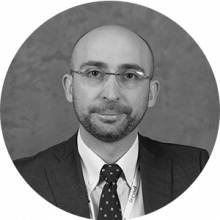Hepato-Biliary-Pancreatic
Introduction
Presentation
Module Three is a continuation of our organ system – focused approach to flexible surgical endoscopy. In this module, “Hepatobiliary-Pancreatic” (HBP), we cover the pertinent anatomy, physiology, disease processes and interventions pertaining to the medical and surgical management of this complex system.
We detail the pre- and post-op anatomy of the liver, pancreas and biliary tree, covering specific terminology for liver segmentation and pedicle anatomy. We explore the use of EUS, ERCP, choledocoscopy, cholangiography and non-invasive imaging methods for the examination of HPB anomalies and pathology. We cover the evaluation and management of malignant processes such as intra-hepatic, peri-ampullary, pancreatic and biliary-derived tumors as well as benign processes such as ductal stones, variations in anatomy (papillary, ductal or biliary tract), fistulas and strictures. Special attention will be paid to the variety of pancreatic tumors (mucinous, adenocarcinoma and endocrine) and the nuances to their appropriate diagnosis and management.
From this foundation we learn about the surgical and endoscopic techniques available for intervention. We cover endovascular and percutaneous approaches to liver tumors; the basics of hepatic resection and surgical treatment for biliary or gallbladder disease; lithotripsy and extraction of ductal stones; ERCP, biliary drainage, stenting, tissue ablation and dilatation; and pancreatic enucleation versus segmental resection or necrosectomy.
Finally, we discuss the common complications of these procedures, both immediate and long term, in regard to frequency, recognition and management.
 3
lessons
3
lessons
 10
speakers
10
speakers
 16:07
hours
16:07
hours
 251
followers
251
followers
Course directors

Guido Costamagna

Ivo Boškoski
Objectives
- Understand normal and common post-operative anatomy of the HPB system.
- Understand the terminology of liver segmentation and the liver pedicle.
- Understand the diagnostic and management principles of:
- Malignant processes such as intra-hepatic, peri-ampullary, pancreatic and biliary-derived tumors as well as
- Benign processes such as ductal stones, variations in anatomy (papillary, ductal or biliary tract), fistulas and strictures.
- Possess a basic understanding of the variety of pancreatic tumors and differences in diagnosis and management
- Understand the use of various imaging modalities for evaluation of HPB pathology, including:
- EUS
- ERCP
- Choledochoscopy
- Cholangiography
- CT scan
- MRI
- Understand the contraindications, indications and basic techniques of surgical and endoscopic HPB interventions such as:
- ERCP
- Tissue ablation
- Percutaneous catheterization
- Stenting
- Balloon dilatation
- Biliary drainage
- Liver resection
- Pancreatic resection (segmental vs. enucleation)
- Understand how to recognize and manage common complications from HPB interventions such as fistulas, structures, leaks and bleeding.
Biliary tract
ERCP 101: The Basics
ERCP is an advanced endoscopic technique that combines endoscopy and fluoroscopy to diagnose and treat biliary and pancreatic duct disorders. A duodenoscope is advanced to the second portion of the duodenum to cannulate the Ampulla of Vater.
Impact of Bile Duct Injury on the Patient and Society
Bile duct injury (BDI) after cholecystectomy is a serious iatrogenic complication associated with high morbidity and mortality.
The use of LAMS for the drainage of pancreatic collections
The use of LAMS for the drainage of pancreatic collections
